Tom's Guide Verdict
The Maono Wave T5 is a good option for newbies or those hesitant to invest in a pricier Shure, DJI, or Rode microphone. Due to its lack of warmth and poor ambient noise minimization, I wouldn’t recommend the Wave T5 for professionals or near-professionals. However, it’s really easy to use, and could be a great way to teach yourself how to create video content before splurging on the aforementioned premium brands.
Pros
- +
Affordable
- +
Easy to use
- +
Comes with a range of connectivity types
- +
Has a nice charging and carry case
Cons
- -
Ambient noise minimization quite poor
- -
Audio quality not up to scratch for professionals or serious content creators
Why you can trust Tom's Guide
The Maono Wave T5 is a budget-friendly wireless lavalier mic. While I wouldn’t count it as one of the best microphones I’ve ever personally tested, it’s not without merit. I’d recommend it for beginners or if you want to teach yourself the art of content creation without investing in a more premium setup.
With a whole range of connectivity options — USB-C, Lightning, and Camera, or all three — this is a great mic for testing the waters of social content creation. It’s also really easy to use, with a straightforward companion app and instant setup.
However, due to the lower-quality sound recording and the lackluster ambient noise minimization features, I can’t recommend it for those who need a top-of-the-range mic for professional-feeling content. Not you, though? You’re going to want to find out more in this Maono Wave T5 review.
Maono Wave T5 review: Cheat sheet
- What is it? A wireless lav mic
- Who is it for? Beginner content creators
- What does it cost? From $89 / £69
- What do we like? Very affordable and easy to use
- What don’t we like? The ambient noise minimization is pretty poor, and the sound quality isn’t good enough for professionals
Maono Wave T5 review: Specs
Maono Wave T5 review: Price & availability
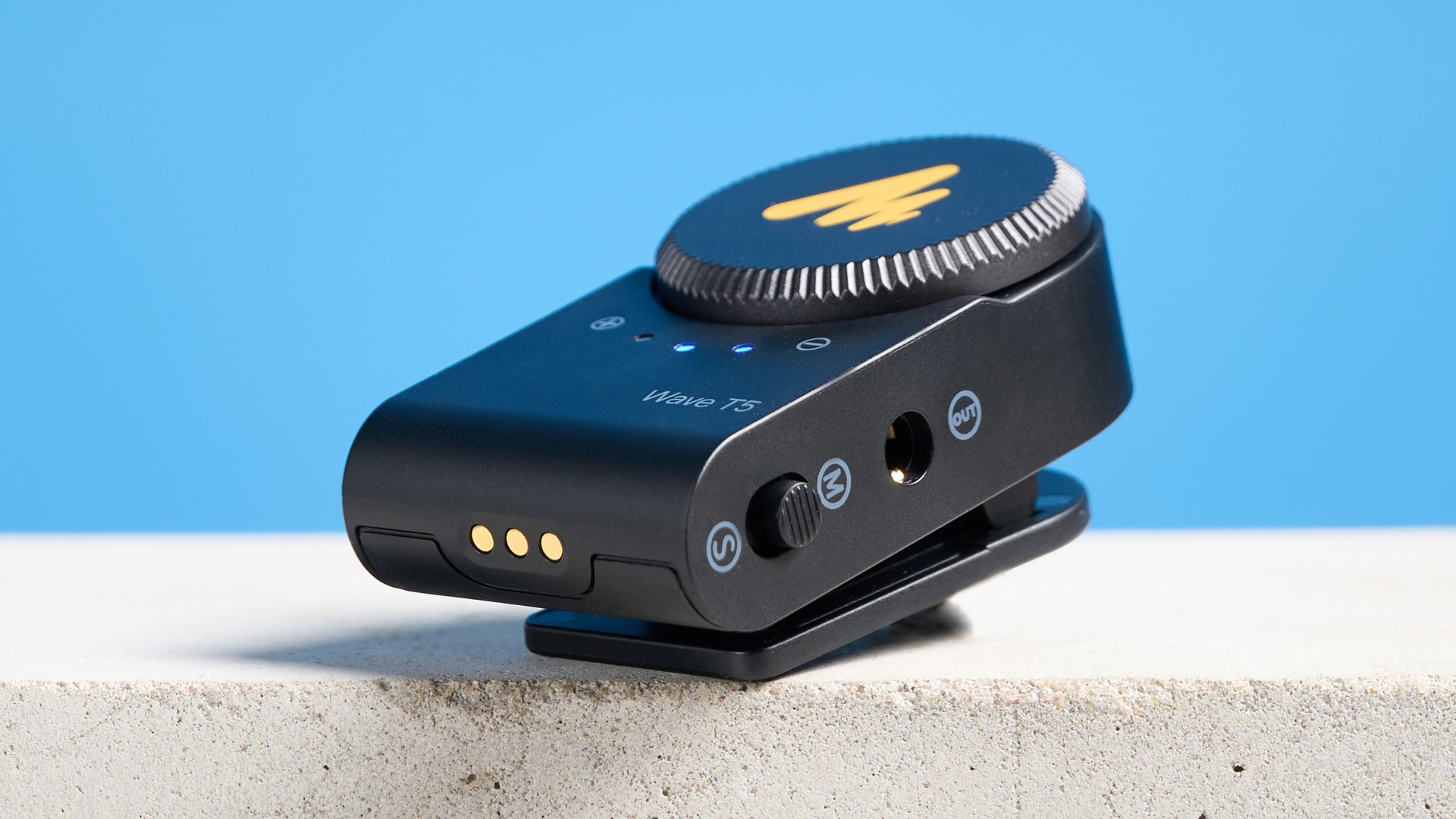
Maono sells four versions of the Wave T5, all on Amazon U.S.: the USB-C model is $89, the Lightning model is $99, the Camera model is $99, and the Combo (all connectivity options) is $109. I tested the Combo version, so I had access to the Lightning, 3.5mm camera, and the USB-C transmitters. You can also find the USB-C and Camera combo on Amazon U.K. for £69 and £119 respectively.
The Combo model comes with 2TX, 3RX (one of each type). USB-C, Lightning, and Camera come with 2TX and 1RX.
In terms of lavalier mics, the Wave T5 is supremely affordable. I’ve also tested the Sennheiser Profile Wireless, which will set you back a pretty hefty $299. The Shure MoveMic 88+ is probably the best wireless mic I’ve tested, but it’s not a clip-on lav mic in the same way the Wave T5 is. It’s also $449 with the receiver kit, but oh boy, you get what you pay for.
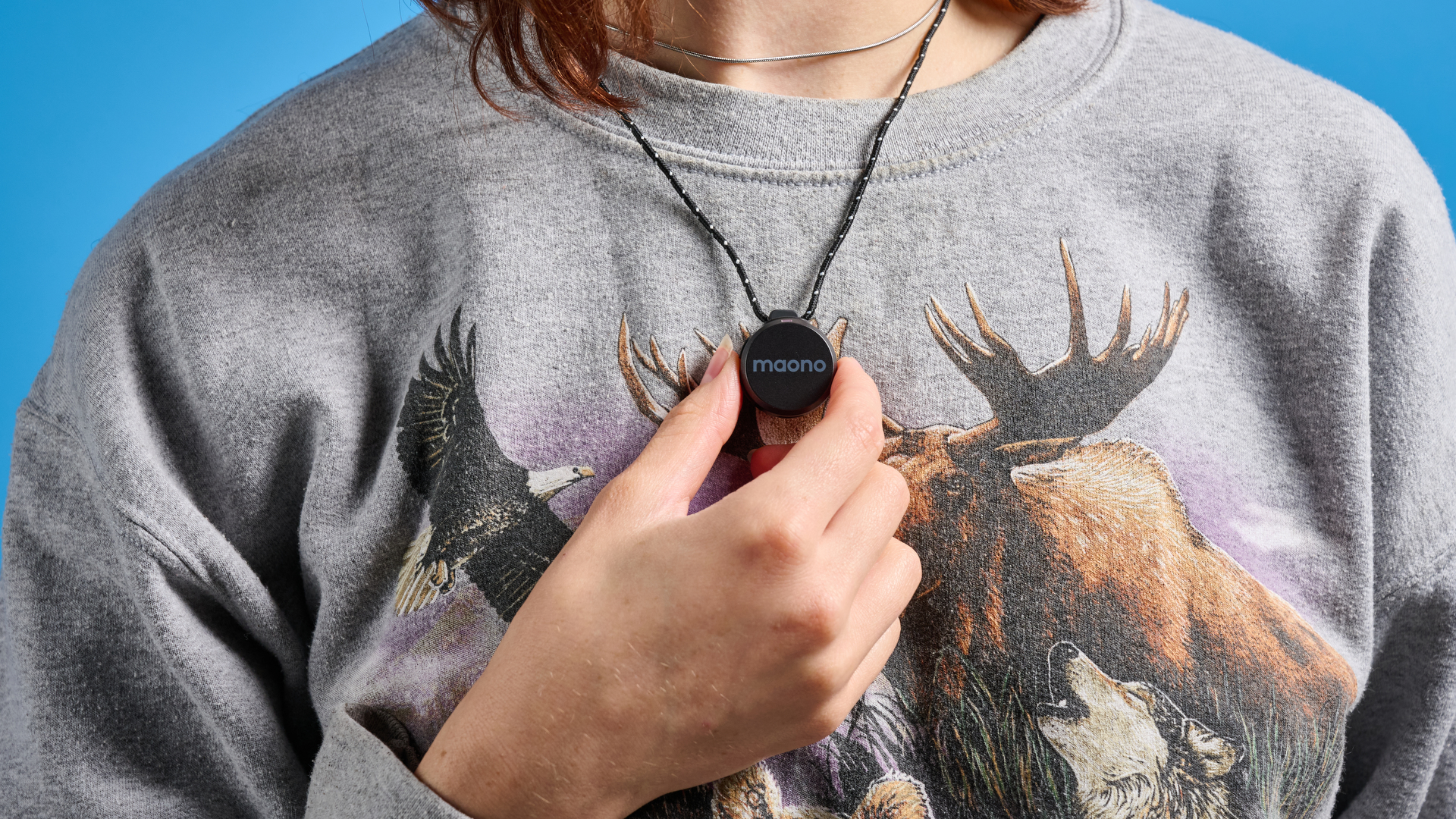
Shure’s MoveMic Two is an eye-watering $499, but again, you get what you pay for. If you can afford it, there’s very little beating Shure’s professional, warm, rich, broadcast-quality sound performance.
Get instant access to breaking news, the hottest reviews, great deals and helpful tips.
At the more affordable end of the spectrum, you’ve got the DJI Mic Mini, which starts from just $59. The DJI option is a fantastic first mic, and I’d recommend it over the Wave T5 wholeheartedly.
If you had a little more to spend, though, you might want to check out Rode’s wireless mics. I’ve tested both the Rode Wireless Go Gen 3 ($329) and the Rode Wireless Micro ($149), and loved both of them. We’ve also tested the Rode Wireless Pro (and we use this mic to shoot our video content), which is $399, and is a great premium option. But if you’re looking to spend as little as possible, I’m sure that the Wireless Micro will provide a more professional quality if you can part with an extra $50.
Maono Wave T5 review: Design & controls
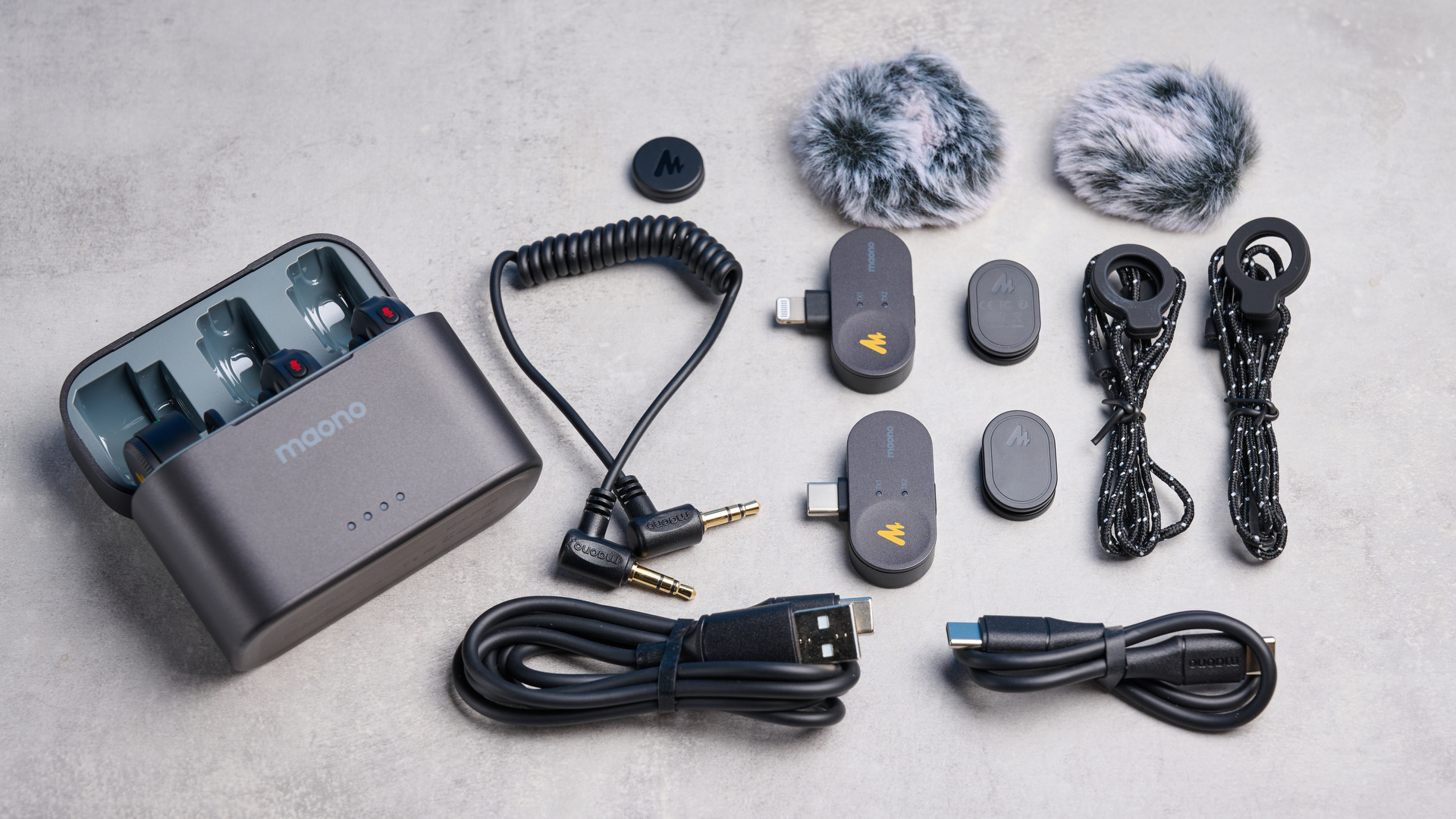
- Charging case for the Camera receiver and two transmitters
- Plasticky appearance, but does the trick
- Transmitters have magnetic clips or necklace attachments
As with other Maono gear, the Wave T5 looks pretty cheap. This isn’t necessarily a major con — it’s kind of expected that cheap stuff looks cheap — but if you’re trying to branch out into professional content creation or journalism, you might be better off with a DJI or Rode option.
Where the Maono pips the commonly-used DJI Mic Mini, though, is the charging case. The basic version of the Mic Mini lacks a charging case altogether, but the Maono does come with a case, and it’s awesome. Although it’s quite large, at 6 x 5 inches, I find this is actually quite beneficial for on-the-go shoots. The size means you can find the box quickly, and then set up shots faster..
The mic also comes with a hard-shell case, which has space for the two dead cats, Lightning, USB-C, and 3.5mm camera cable. Again, this is great for outdoor shoots, as it’s easy to locate in a kit bag.
As for controls, the Wave T5 behaves like any other lav mic setup. There are power on and connection buttons on the side of the two transmitters. On the camera receiver, you’ll find a Mono/Stereo slider and a headphone out jack for live monitoring. There’s also a live gain monitor in the Maono Link app, but I’ll discuss that more in the ‘App’ section below.
Maono Wave T5 review: Features & connectivity

- USB-C, Lightning, and/or Camera receiver
- AI noise cancellation
- Vocal tones — ‘Sound coloration’ — in the Maono Link app
Considering this is a $89-$119 mic, I wasn’t expecting any particular features. However, I was pleasantly surprised to find not only AI-powered noise minimization in the Maono Link app, but also a whole range of vocal tones.
These vocal tones are similar to Shure’s options: There’s warmth, bright, husky, and voice enhancer.
‘Voice enhancer’ makes you sound a little louder, but the difference is negligible. Again, ‘Husky’ barely affected the sound of my voice. The only one that made an audible difference is ‘Bright’, which increased the treble sounds in my voice and made me sound slightly colder. Comparatively, ‘Warmth’ highlighted the lower-frequency sounds and would suit a podcast more than video content.
I would recommend using ‘Bright’ and ‘Warmth’ over the other tones, as these were the only ones that actually affected my voice during testing.
However, these still didn’t provide a professional level of sound quality, which I’ll discuss in more detail later. Still, if you want a professional-sounding mic, I’d recommend the Rode Wireless Micro or the DJI Mic Mini.

Now, in terms of connectivity, it depends on which mic version you buy. Obviously, if you buy the USB-C version, you will only get a USB-C dongle. Similarly, if you buy the Lightning, you will get a Lightning dongle. If you buy the Camera version, you’ll get the camera receiver and a 3.5mm jack. Finally, if you buy the Combo, you will get all three. I tested the Combo, and I can attest that connecting is straightforward. All I had to do was connect the USB-C dongle to my phone, and voila. I was ready to record.
Unlike the Shure MoveMic 88+, which requires the $449 RX kit to record video directly into your cellphone library, I was able to record using the Wave T5 straight to my phone. When I used the mic on a video call, my colleagues reported that my voice was a touch delayed, but I didn’t experience this during video recording.
During recording, I was really impressed by the range. Although Maono says the Wave T5 has a wireless range of 165 feet indoors. I was able to get out of my apartment and halfway up the stairs before the transmission cut out, which is probably about as far as you’d realistically get from your recording device during shoots.
Comparatively, the Rode Wireless Pro has a range of 850 feet, which makes sense for a professional, $399 mic, and the Rode Wireless Micro tops out at 328 feet. I’d say the Wave T5’s range checks out for a budget wireless mic, but it isn’t anything to write home about.
Maono Wave T5 review: App
- Maono Link app
- Available on both iOS and Android
- Features like AI noise canceling and vocal tones
As I mentioned earlier, the Maono Link app has a whole range of features, including a Shure-inspired ‘Sound coloration’ (vocal tones) and an AI-powered noise reduction mode. Here’s a few screenshots from the app for your perusal.
As you can see, the app is very easy to navigate and is cleanly designed. Although it’s not going to win any innovation awards, this is a fantastic companion app for a sub-$100 microphone. The Link app has more features than Rode's Central app — compatible with the Wireless Micro and Go Gen 3 — so Maono beats Rode there.
Maono Wave T5 review: Audio quality
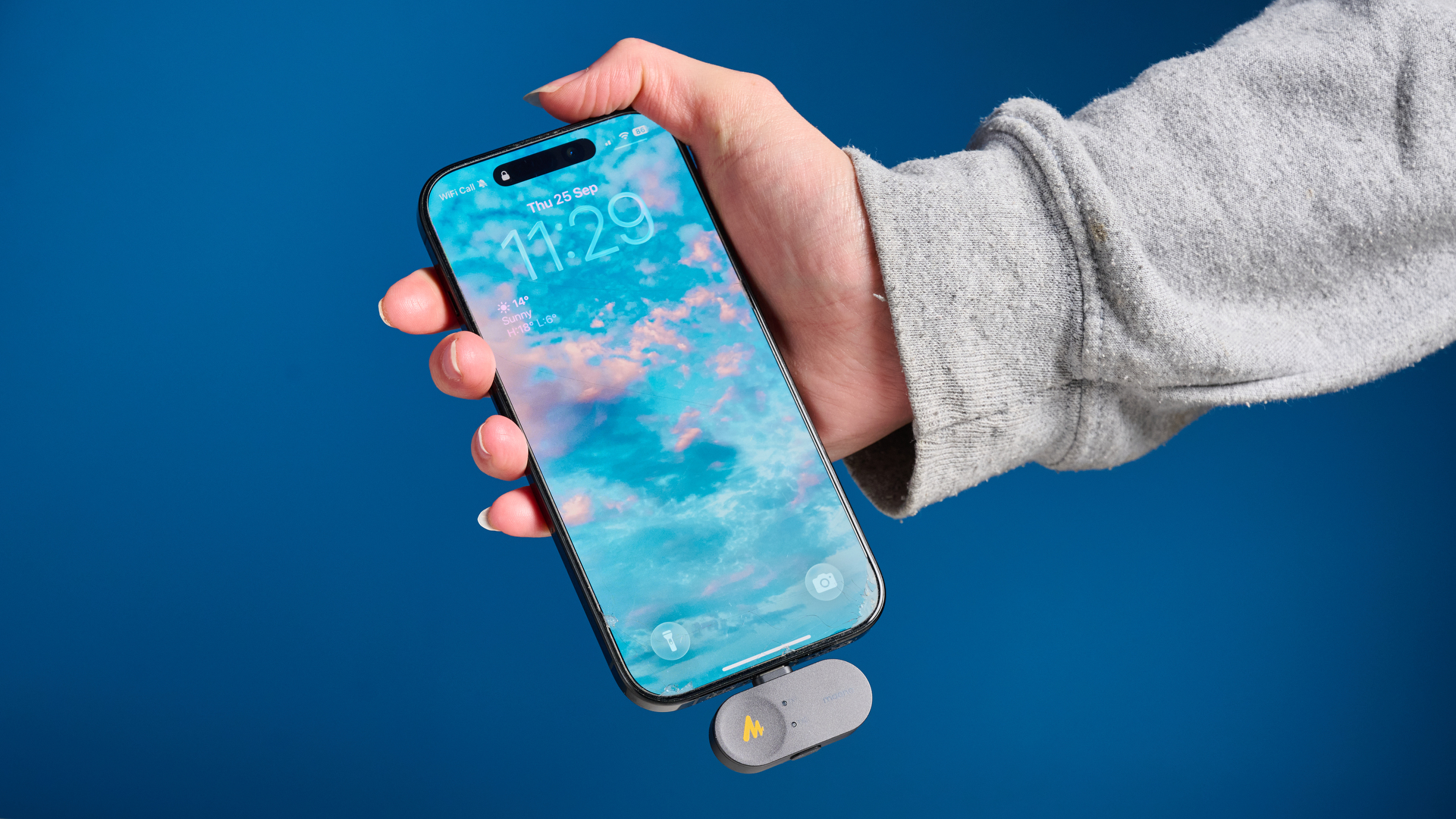
- Decent sound quality, but not professional level
- Faithful voice recording
- Good for a budget mic
As with other Maono gear I’ve reviewed, the Wave T5 has good-but-not-great sound quality. Although my voice was faithfully reproduced and the mics didn’t suffer from pops or hisses, there’s still that je ne se quais missing. You know how content creators on another level just sound better? That’s probably because they’re using premium mics like the Shure Move 88+ or the Rode Wireless Go Gen 3.
Therefore, if you want that same quality, you’re going to have to spend a bit extra to get the warm, rich, complex audio quality.
However, for a first mic, the Maono Wave T5 still holds its own. Take a listen to a condensed version of my ‘Verdict’ below.
As you can hear, my voice is clear and focused, but it doesn’t have that indescribable professional quality you’d expect from a serious content creator. Again, I think the Wave T5 is great if you’re just starting out, but if you’re trying to level up from amateur to professional, I think you need something a bit more premium.
Take a listen to the rest of my standardized audio testing, though, to get a feel for the mic.
Standardized audio testing
I tested the Wave T5’s ability to handle pops, hisses, and ambient noise performance.
Plosives
Here, I read out a few children’s tongue twisters to put the Wave T5 to the plosive test. I had the mic clipped to my collar for this, so it was about 6 inches away from my mouth.
The Wave T5 handles pops and plosives very well. I was surprised to hear no pops. The Wave T5 performed around the same as the Rode Wireless Micro.
Fricatives/sibilance
I’m quite prone to sibilant hissing regardless, but I really tried to enunciate my ‘S’ sounds to put the Maono Wave T5 to the test. Here are the results.
As you can hear, the mic handled the sibilant hissing sounds quite well. Again, I recorded this when the mic was clipped to my collar, so around 6 inches from my face. The performance is around the same as the Rode Wireless Micro.
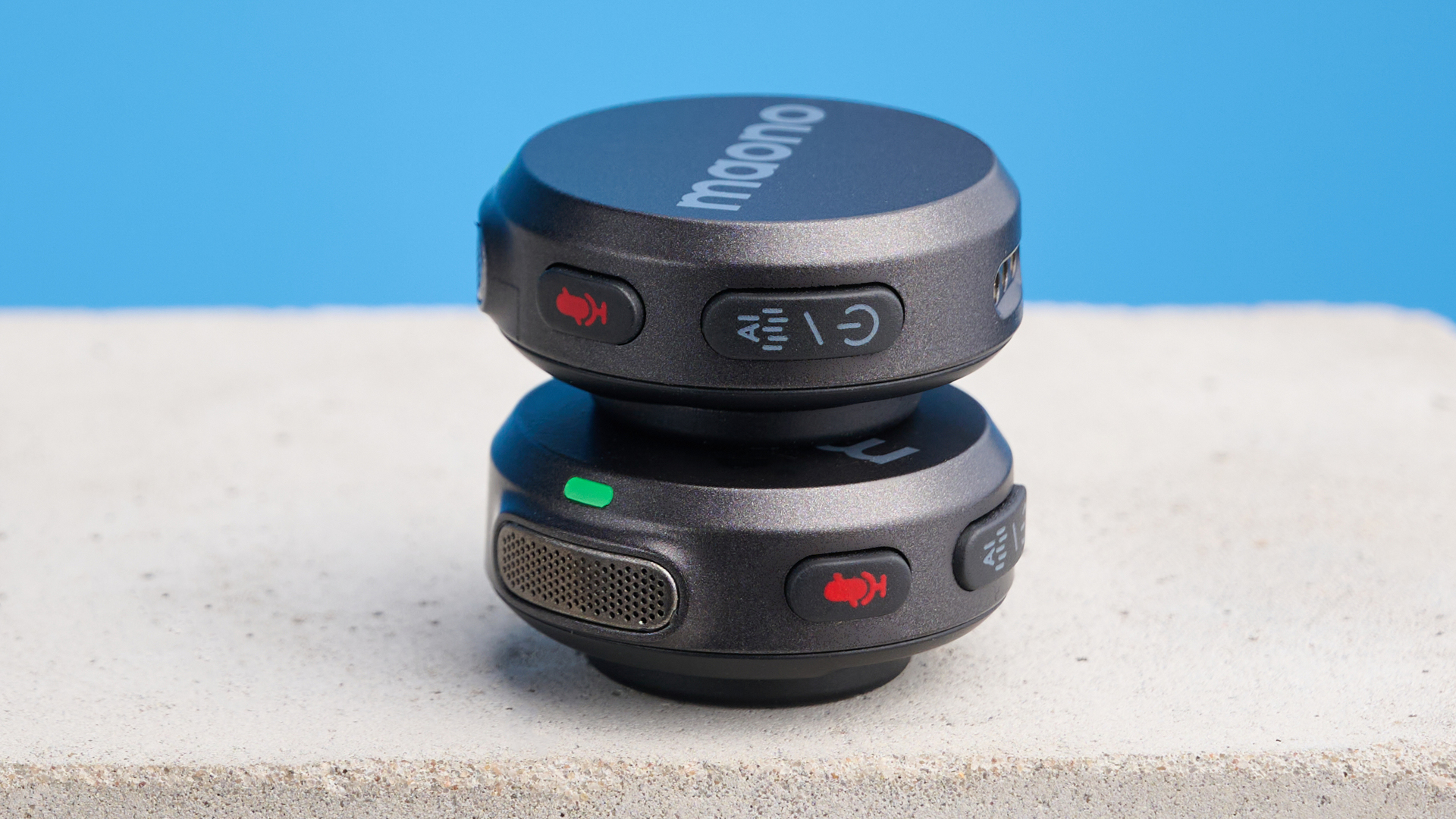
Ambient noise performance
I was really disappointed by the ambient noise minimization. As the Maono DM40 Pro (gaming microphone) really impressed me, I was expecting to be just as blown away by the Wave T5.
However, the mic performed quite poorly. Here’s an example to show you what I mean. I recorded this with the ‘Aggressive’ noise cancellation mode activated, and my standard ambient noise track playing at 60-65dB.
As you can hear, my voice sounds quite metallic, and the ambient noise is still very audible behind me.
Here’s a direct comparison. This second clip was recorded with no ambient noise minimization whatsoever.
My voice doesn’t sound as warped or metallic, but the ambient noise track is even more audible. Again, I recorded this with the mic clipped to my collar, so around 6 inches away from my mouth.
I was super disappointed by the ambient noise performance, and I wouldn’t recommend this mic for OBs or city vox pops. You’d be better off with the Rode Wireless Micro or the DJI Mic Mini, which is $169 for 2TX and an RX.
Maono Wave T5 review: Verdict

If you want a professional microphone, the Maono Wave T5 isn’t it. The voice reproduction isn’t as warm, rich, or clear as you might expect to hear on high-quality video content, and the noise minimization isn’t up to scratch. If you want the creme de la creme of microphones, you’re unfortunately going to have to spend more on a DJI or a Rode microphone. You can get the DJI Mic Mini complete setup for $169, or the Rode Wireless Micro for $149.
However, if you’re a beginner or you’re just looking for something ‘amateur’ to play around with, then the Maono Wave T5 will be great for you. It comes with two dead cats and a range of receivers so you can connect to your camera, phone, or anything else with a USB-C or Lightning port.
Even though it doesn’t have professional audio quality, for newbies, the Maono Wave T5 is a good entry-level model that could be a metaphorical pair of training wheels in the expensive world of content creation. I would recommend the aforementioned DJI Mic Mini or Rode Wireless Micro, though.

Erin Bashford is a senior writer at Tom's Guide, focusing on reviews. She has a Masters in Broadcast and Digital Journalism from the University of East Anglia. As an ex-barista, she knows her way around a coffee machine, and as a music lover, she's constantly chipping away at her dream of having a multi-room home sound system. In her spare time you can find her reading, practising yoga, writing, or stressing over today’s NYT Games.
You must confirm your public display name before commenting
Please logout and then login again, you will then be prompted to enter your display name.
